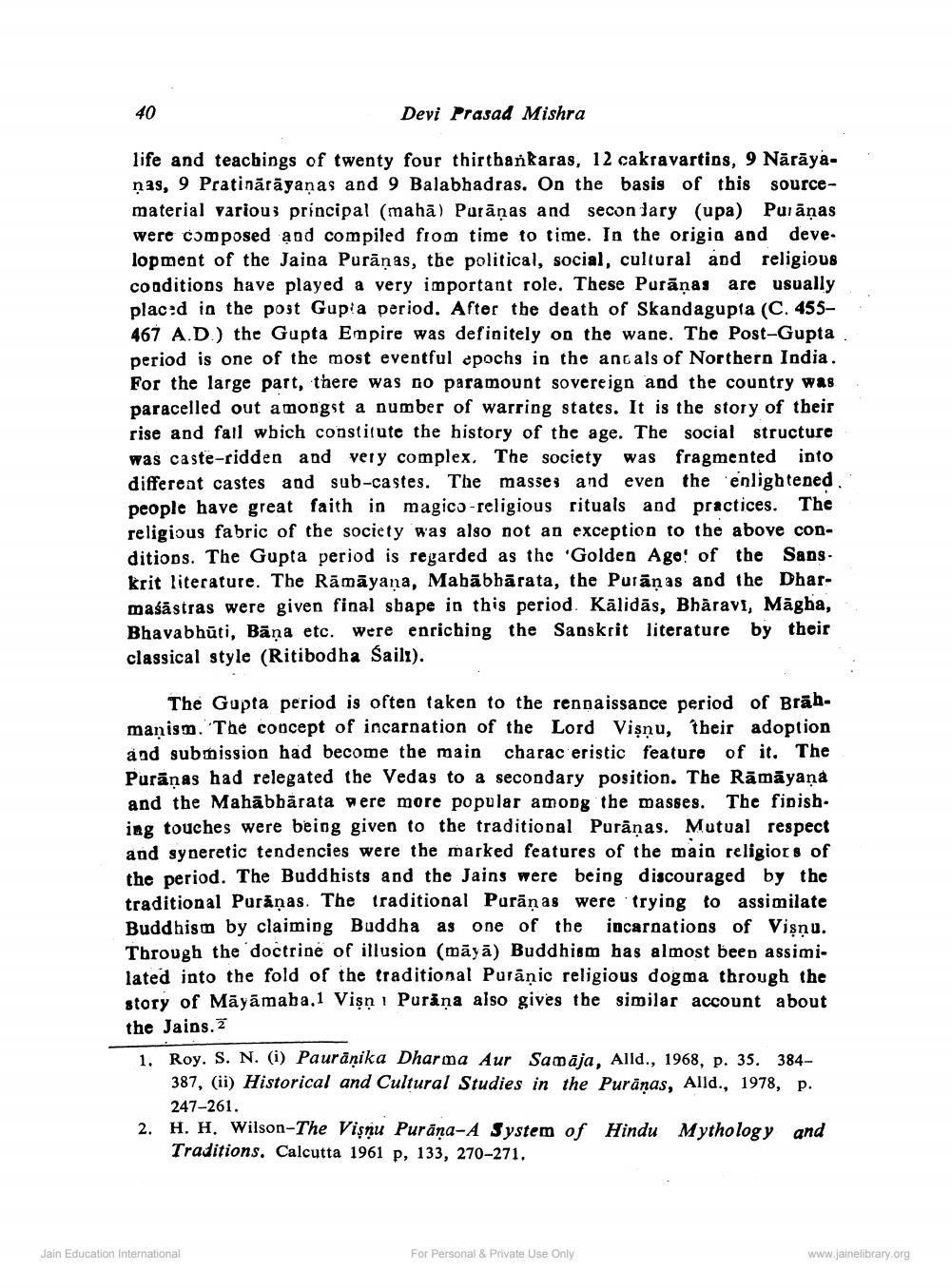________________
40
Devi Prasad Mishra
ally
.
life and teachings of twenty four thirthankaras, 12 cakravartins, 9 Nārāya. ņas, 9 Pratinārāyanas and 9 Balabhadras. On the basis of this sourcematerial various principal (mahā) Purāṇas and secondary (upa) Purānas were composed and compiled from time to time. In the origin and deve. lopment of the Jaina Purāņas, the political, social, cultural and religious conditions have played a very important role. These Purāņas are usually placed in the post Gupla period. After the death of Skandagupta (C. 455– 467 A.D.) the Gupta Empire was definitely on the wane. The Post-Gupta period is one of the most eventful epochs in the ancals of Northern India. For the large part, there was no paramount sovereign and the country was paracelled out amongst a number of warring states. It is the story of their rise and fall wbich constitute the history of the age. The social structure was caste-ridden and very complex. The society was fragmented into differeat castes and sub-castes. The masses and even the enlightened. people have great faith in magico-religious rituals and practices. The religious fabric of the society was also not an exception to the above conditions. The Gupta period is regarded as the 'Golden Ago! of the Sans. krit literature. The Rāmāyaṇa, Mahābhārata, the Purānas and the Dharmaśāstras were given final sbape in this period. Kālidās, Bharavi, Māgha, Bhavabhūti, Bāņa etc. were enriching the Sanskrit literature by their classical style (Ritibodha Saili).
The Gupta period is often taken to the rennaissance period of Brāh. manism. The concept of incarnation of the Lord Vişnu, their adoption and submission had become the main charac eristic feature of it. The Purānas had relegated the Vedas to a secondary position. The Rāmāyaṇa and the Mahābbārata were more popular among the masses. The finish. ing touches were being given to the traditional Puranas. Mutual respect and syneretic tendencies were the marked features of the main religiors of the period. The Buddhists and the Jains were being discouraged by the traditional Puranas. The traditional Parānas were trying to assimilate Buddhism by claiming Buddha as one of the incarnations of Vişnu. Through the doctrine of illusion (māyā) Buddhism has almost been assimilated into the fold of the traditional Purāņic religious dogma through the story of Māyāmaba.1 Vişn 1 Purana also gives the similar account about the Jains. Ž 1. Roy. S. N. (i) Paurāņika Dharma Aur Samāja, Alld., 1968, p. 35. 384
387, (ii) Historical and Cultural Studies in the Purānas, Alld., 1978, p.
247-261. 2. H. H. Wilson-The Vişņu Purāņa-A System of Hindu Mythology and
Traditions. Calcutta 1961 p, 133, 270-271.
Jain Education International
For Personal & Private Use Only
www.jainelibrary.org




